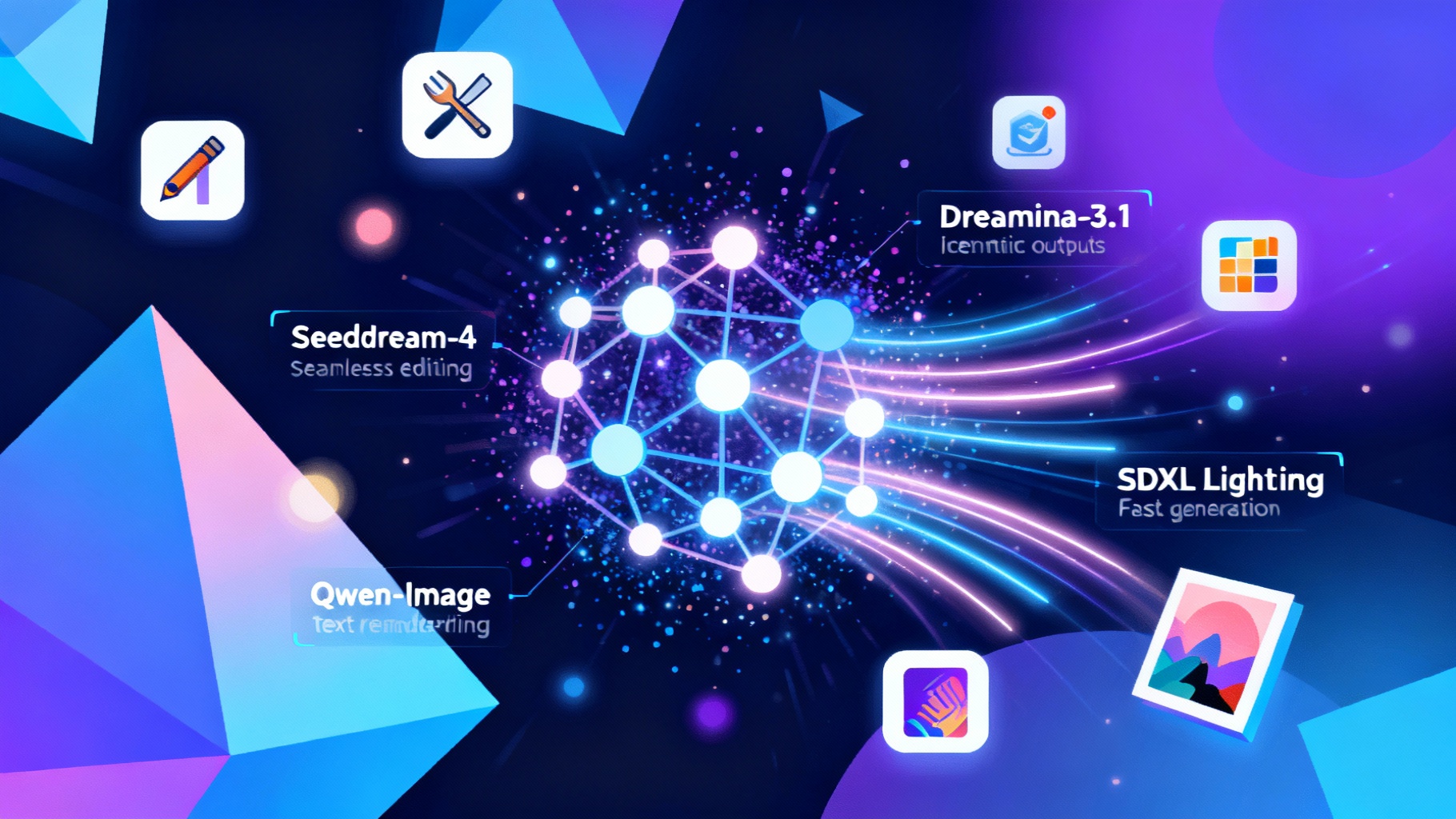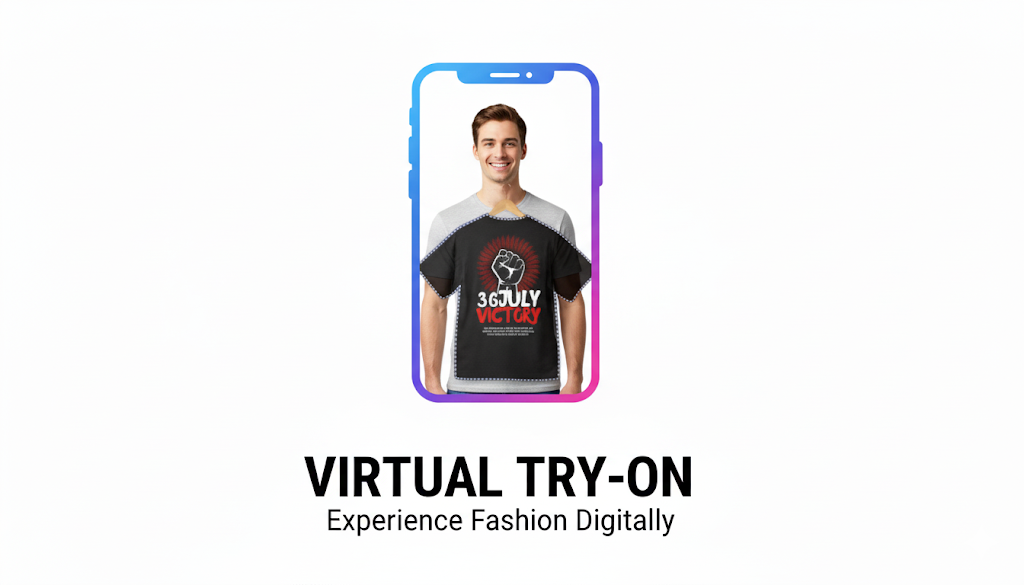In the rapidly evolving world of artificial intelligence, text-to-image models have revolutionized creative workflows, enabling artists, designers, marketers, and everyday users to transform simple prompts into breathtaking visuals. As of 2025, these AI image generation tools are more powerful than ever, offering high-resolution outputs, precise style control, and seamless integration into professional pipelines. Whether you're crafting cinematic scenes, generating marketing assets, or experimenting with digital art, the right text-to-image AI can supercharge your imagination.
At LumozAI, a leading platform for AI model exploration, you'll find a curated selection of the best text-to-image models available today. In this comprehensive guide, we'll dive into all the standout models featured on their text-to-image category page. From open-source innovators to proprietary powerhouses, these tools represent the pinnacle of AI-driven image synthesis. We'll cover their key features, strengths, and why they're essential for your next project. Ready to explore? Let's jump in!
What Makes a Great Text-to-Image Model?
Before we spotlight the models, it's worth understanding the core attributes that define excellence in this space. Top-tier text-to-image AI excels in:
- Prompt Adherence: Accurately interpreting complex descriptions.
- Image Quality: Delivering high-fidelity, detailed outputs up to 4K or beyond.
- Speed and Efficiency: Generating images in seconds without compromising creativity.
- Versatility: Supporting styles from photorealistic to abstract, with features like editing and style transfer.
- Accessibility: Easy integration via APIs, open-source code, or user-friendly interfaces.
With these benchmarks in mind, here's a breakdown of the premier models available on LumozAI's platform. Each one is linked to its dedicated page for deeper dives, demos, and access details.
1. Seedream-4: Unified Generation and Editing Powerhouse
For creators seeking a versatile all-in-one solution, Seedream-4 stands out as a unified text-to-image generation and editing model. This advanced tool supports precise single-sentence editing while producing stunning images at up to 4K resolution. Ideal for iterative design processes, Seedream-4 ensures your visions evolve seamlessly without starting from scratch.
Key features include enhanced text rendering for logos and typography-heavy prompts, plus robust handling of diverse artistic styles. In 2025, it's a go-to for digital artists and ad agencies looking to refine concepts quickly. If you're tired of clunky post-processing, Seedream-4's integrated editing capabilities will streamline your workflow.
2. Dreamina-3.1: Cinematic-Quality Images with Style Mastery
Elevate your visuals to Hollywood levels with Dreamina-3.1, a 4MP text-to-image model optimized for cinematic-quality outputs. This iteration boasts improved style control, sharper text rendering, and commercial design tweaks that make it perfect for branding and e-commerce.
What sets Dreamina-3.1 apart is its ability to generate ultra-detailed scenes with dynamic lighting and composition. Whether you're prompting for epic landscapes or product mockups, this model delivers photorealistic results with minimal artifacts. For marketers in 2025, it's an indispensable tool for high-impact visuals that convert.
3. Qwen-Image: Breakthrough in Complex Text Rendering
Pushing the boundaries of textual integration in images, Qwen-Image from the Qwen series achieves remarkable advances in rendering intricate text within visuals. This foundation model is a game-changer for designers needing accurate signage, book covers, or infographics where words must blend flawlessly with imagery.
With its focus on semantic understanding, Qwen-Image handles multilingual prompts and stylistic nuances effortlessly. In an era where AI-generated content demands precision, this model ensures your text-to-image outputs are not just beautiful but functionally superior. Explore it on LumozAI for tutorials on leveraging its text prowess.
4. Imagen-4: Google's Flagship Preview for Next-Gen Creativity
Google's Imagen-4 is a preview of their flagship text-to-image model, promising transformative capabilities—though as a preview, it may evolve. This powerhouse emphasizes natural language comprehension, generating diverse, high-quality images from nuanced prompts.
Expect superior handling of human anatomy, environments, and abstract concepts. For developers and researchers in 2025, Imagen-4's API potential is exciting, offering scalable solutions for apps and platforms. Keep an eye on updates via its LumozAI page, as this could redefine enterprise-level AI image generation.
5. Moondream2 Visual Query: Efficient Vision-Language Hybrid
Compact yet mighty, Moondream2 Visual Query is an open-source vision-language model that packs powerful image understanding into a small footprint. Perfect for mobile apps or resource-constrained environments, it excels in querying and generating images based on visual-text hybrids.
Its efficiency makes it ideal for real-time applications like augmented reality or interactive storytelling. In 2025, as edge computing rises, Moondream2's lightweight design ensures fast text-to-image conversions without heavy hardware. Developers will appreciate its open-source nature for custom fine-tuning.
6. Imagen3: Visually Rich Details and Textures
Building on Google's legacy, Imagen3 generates visually rich, high-quality images with exceptional attention to lighting, composition, and minute details—like the wrinkles on a hand or the texture of a knitted toy. This model shines in creating lifelike portraits and intricate object renders.
For photographers and illustrators, Imagen3's ability to capture subtle nuances elevates everyday prompts into professional-grade art. Its 2025 relevance lies in bridging the gap between AI generation and traditional artistry, making it a staple for creative pros seeking authenticity.
7. Image-01: Character Reference for Consistent Storytelling
Minimax's Image-01 introduces character reference support, allowing for consistent depictions across multiple generations—crucial for comics, animations, or narrative series. As their inaugural image model, it delivers reliable, high-fidelity outputs from text descriptions.
This feature ensures your fantasy heroes or brand mascots remain true to form, reducing revision time. In the booming world of digital storytelling in 2025, Image-01 is a must-try for writers and animators aiming for cohesive visual narratives.
8. Photon: Optimized for Professional Workflows
Tailored for creative pros, Photon is a high-quality text-to-image model focused on ultra-high fidelity and workflow efficiency. It supports advanced prompting for photorealism, surrealism, and everything in between, with outputs optimized for editing in tools like Photoshop.
Its speed and diversity make it a favorite among agencies handling tight deadlines. For 2025's fast-paced creative industry, Photon's professional-grade features—like batch generation and style presets—position it as an essential asset for scalable image production.
9. SDXL Lightning: Ultra-Fast High-Quality Generation
ByteDance's SDXL Lightning redefines speed in text-to-image AI, producing high-quality images in just 4 steps. Building on Stable Diffusion's foundation, it maintains detail and creativity without the long wait times of older models.
Ideal for rapid prototyping or social media content, this model democratizes AI art for beginners and experts alike. In 2025, as content velocity increases, SDXL Lightning's efficiency ensures you stay ahead without sacrificing quality—check its LumozAI page for prompt engineering tips.
10. Flux-1.1-Pro: Enhanced Speed and Diversity
An upgrade to the popular Flux series, Flux-1.1-Pro offers faster generation, superior image quality, and unwavering prompt adherence. This text-to-image model excels in diversity, producing varied outputs from the same prompt for endless inspiration.
With its pro-level refinements, it's suited for commercial use in advertising and game design. Flux-1.1-Pro's 2025 edge comes from balancing speed with artistic depth, making it a versatile choice for teams pushing creative boundaries.
11. Hidream-L1: Open-Source State-of-the-Art in Seconds
Finally, Hidream-L1 is a 17B-parameter open-source model that delivers state-of-the-art image generation in mere seconds. HiDream-I1's foundation ensures top-tier quality across resolutions and styles, from hyper-realistic to whimsical.
As an accessible powerhouse, it's perfect for indie developers and hobbyists. In 2025, its open-source ethos fosters community-driven improvements, positioning Hidream-L1 as a collaborative force in democratizing elite AI image tools.
Choosing the Right Text-to-Image Model for Your Needs
With such a rich lineup on LumozAI's text-to-image category, selecting the best model boils down to your priorities: speed (SDXL Lightning), detail (Imagen3), or editing (Seedream-4). Experiment via LumozAI's platform to test prompts and see real results. These tools not only boost productivity but also spark innovation, turning words into worlds.
As AI continues to blur lines between imagination and reality, staying updated with models like these will keep you at the forefront. Dive into LumozAI today and start generating—your next masterpiece awaits!


